
Photo by Ahmed Aqtai from Pexels
“Growth does not mean size!”
This is the kind of comment that you might expect from a new economics, or a new age group, but you probably would not expect to hear it from a major multinational. Yet that was how the new CEO of Suez Environment, a major global water and waste organisation, opened his announcement of the company’s 2030 Vision. He was referring to physical size for he went on to speak of reducing capital (physical structures) and increasing IT, of focusing not on ‘growth’ as such, but on selecting just those areas in which they could add most value. In other words, to grow performance and profit. And yes, profit is a ‘good thing’, if it is a reflection of good performance.
I have a feeling we are about to see more of this kind of growth take place from now on. We can contrast this approach to the older approach where companies seek to grow simply by amalgamations and mergers. In the recent past, there has been a lot of this ‘growth’ but it really isn’t growth at all, because nothing has been added by the merger (despite claims to the contrary). It is just a re-packaging of what already exists. This has been particularly prevalent in engineering and consulting, and yes, also in asset management, companies. Yet it seems that every time a merger occurs, not only do we add more ‘administrative’ levels (i.e. more cost) but many of those employees who are most able and innovative, leave the mega businesses and set up their own businesses as small, more flexible, more imaginative units – and thrive.
So is ‘size’, as such, a good indicator of company strength? What examples do we have of growing ‘smarter’ rather than simply larger? If we are in future to focus on growing ‘smarter’ rather than ‘larger’, what would we measure, what indicators would/should we focus on? How does ‘big data’ and algorithms offer opportunities for smart growth?
And the important question:
How can strategic asset management contribute to such ‘smart growth’?
 SEVEN SPECIFICS OF BEING A STRATEGIST
SEVEN SPECIFICS OF BEING A STRATEGIST
We were talking about asset management – of course! – but more specifically about ‘thinking like a strategist’ when my friend and colleague, Ruth Wallsgrove, asked:
‘What would a strategist do that a professional engineer, accountant, or administrator would not?’
Now the truth is that any professional can think like a strategist, and often does. The trick to doing it better is to do it consistently, consciously, and in collaboration with others, in other words – corporately! So What does it mean to ‘think like a strategist’? Here are what I consider the 7 specifics.
- The Goal – Strategists adopt a big goal, the aims and objectives of the organisation they serve. They recognise that once the prime objective of their organisation is recognised, there may be many different ways to achieve it, in addition to those already identified – and they look!
- The Time Frame – Not ‘now’, and not ‘then’, but rather ‘from now to then’. A focus on what needs to be done to plot the path from the current situation to the desirable future. Such a path needs to be flexible and allow for adjustment as changes occur. (i.e. there is always a Plan B. C…)
- The Scope – the whole organisation and its wider social and environmental context
- The Reason – never ‘because XYZ is doing it’ or ‘because we have always done it this way’ (or even because it is new, innovative and exciting) but because, on balance and considering the options, it is the best way- for now -of achieving the goal. Always reviewing.
- The Attitude – Pragmatic (think Machiavelli), do what works, but analyse why it works. Curious. Sceptical. Analytical. Challenging.
- The Awareness – Strategists are not Superman and do not attempt to be. They know they need, and they fully appreciate, the contribution of others: professionals, tradespeople, users. The stance is one of willing collaboration.
- The Communication – understanding what drives the actions of others is key to the way in which ideas can and should be presented to be effective. People don’t fear change, they fear change being imposed on them. The art of good communication is winning hearts and minds. Strategists listen for more than words, they attune to the emotions of others (feelings of fear, trepidation, courage, hope)
The key difference between the Strategist and Other Professionals can be seen in the goals that they adopt.
Take Backlog for instance. A maintenance engineer will see the need purely in terms of the asset, its reliability and ease of operation. He will generally not see that the resources needed to achieve this reliability and ease of operation that could be used elsewhere in the organisation, and possibly achieve even greater good.
Take KPIs. An accountant may see, and even promote, rules such as debt ratios or productive staff: overheads ratios because these are manageable by her division. She may not even see the damage that is being caused to overall corporate goals by such rules.
Or take “finished staff work”. Any administrator that insists on finished staff work as the sine qua non of excellent administration has to accept old ideas thus ruling out new ones. Easier on him, but not necessarily to the benefit of the organisation.
Each of these is an instance of ‘solo thinking’
Solo thinking is ‘what’s best for me, my performance, my KPI’ – rather than ‘corporate thinking’ or what’s best for the organisation or community.
Organisations bring this upon themselves to a large degree by failing to articulate their goals, and especially their values. They also bring it on themselves by not encouraging and rewarding the strategic behaviour that would serve them better.
Thinking like a strategist, is ‘thinking holistically’ (I realise this word scares the living daylights out of many people, but it really is necessary!)
Professionals can improve their ability to ‘think like a strategist’ by moving ahead in any of these 7 specifics
Our Situation
The world is running out of raw materials and fresh water and is being overburdened with waste and the global construction industry is a major contributor being the largest consumer of resources and raw materials of any sector, responsible for about 33 per cent of emissions, 40 per cent of material consumption and 40 per cent of waste.
Our Challenge
In seeking to deal with this by advocating carbon neutral cities and a “sustainable” built environment, David Ness says that all the talk is about increasing efficiency of operational energy (heating, cooling, lighting) and reducing associated greenhouse gas emissions.There is a failure to account for resource consumption and “embodied carbon” in our buildings and we need to take this problem seriously. We need to find better ways to “reduce, reuse and recycle” in the construction industry. For anyone in doubt about the seriousness of this situation, look up the Guardian’s Concrete Week, five consecutive articles about the dangers of concrete as a construction material and major landfill component.
Our Question
How can we curtail this excessive resource consumption and waste production and protect our quality of life?
Our Guide to Action
And make no mistake, the size of this problem and the extent of the misery that we will experience if we do not solve it, means that we must all take action – as consumers and producers, as users of buildings and infrastructure and as those who write the policies that allow continued abuse or generate potential improvements.
In ‘The Impact of Overbuilding on People and the Planet’ (Cambridge Scholars Publishing, 2019) David A. Ness provides a guide to action, following the recommendations of the World Summit on Sustainable Development, Johannesburg, 2002, ‘which affirmed that all countries should promote sustainable consumption and production patterns by establishing a “sound material-cycle society”, in which the consumption of natural resources is reduced and environmental impacts are minimised. In both developed and developing countries, the key to achieving this was seen to be the promotion of the 3Rs (i.e. reduction, reuse and recycling of waste) in addition to ensuring the sound disposal of waste.’
David’s ideas are backed by years of research in Australia, Asia and especially China – and they are new, innovative, but also practical! “If we can make use of and adapt existing building and infrastructure stock, we save new carbon and resources,”
Practical Application
“We also need to design any new structures for ease of disassembly, adaptation and reuse, as part of a ‘circular’ built environment.” And to put this into practice he has been working with Arup. .
In 2017, the UniSA research team, of which David is a lead player, was awarded the Arup Global Research Challenge to further pursue his ideas. Part of the New Royal Adelaide Hospital was selected as a test case, with radio frequency identification tags attached to potentially reusable building components such as partitions, ceilings, doors and facade panels, and information such as location, size, type, and age of those components uploaded to a database. This successful ‘proof of concept’ opens the way to the next step – some commercially viable applications. It shows there’s an opportunity here to re-use systems that were previously sent to landfill or at best recycled for their raw materials,
The project has allowed the team to take advantage of relatively new technologies like BIM (Building Information Management) systems and cloud-based database storage systems to help track, categorise and organise building elements in a way that was never before possible.
What can you do?
There are many ideas in this book that you can combine with the latest technology if you are research inclined. But for me, the major impact of the book is on global mindsets. What we have for long taken as natural, normal, and indeed beneficial – that is, ever more building and construction – ‘more cranes in the skyline’ – are not natural, and we need to consider carefully whether the benefits they provide are worth the damage that they inevitably cause. This is not to say we should not build more, just that we need to do more to establish whether any particular proposal is of NET benefit.
For all who have a social and environmental conscience and concern, read
The Impact of Overbuilding on People and the Planet’ by David A Ness.
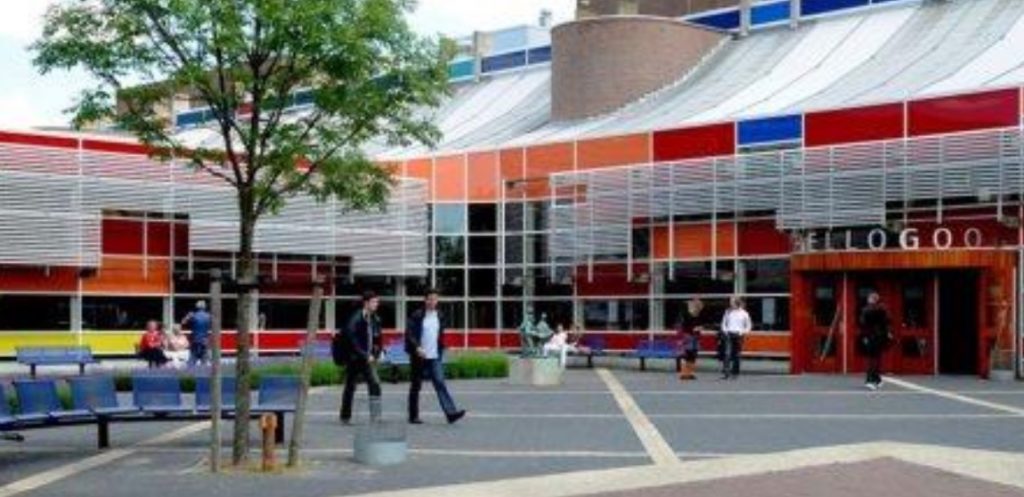
Integrative Asset Management in Holland
Rob Schoenmaker, currently with Delft University, has been appointed to the position of Professor of Asset Management at HZ University of Applied Science. This is a brand new program, not part of engineering, business studies but entirely independent. The aim, in line with the integrative principle of asset management, is to span the boundaries between various disciplines. So he is involved in (civil) engineering, industrial engineering and management, data science, economics and international business management. The lot!
His role is to focus on research, to create long-term relationships with public and private organization, to get real life situations that can be studied and used in the various curricula. All with the end in mind: toeducate the professionals of the future using real problems and challenges.
User Stories
One of the first reaps of the harvest of spanning the boundaries between disciplines is the technique of ‘user stories’. Data scientists use this technique within their CRISP-DM[1]method to determine data mining requirements or goals. This technique has proven to be very useful to get to the core of what asset management professionals need to know.
User stories in ‘software speak’ can seem quite remote. Here it is in simple English. The official format of a user story is:
As <my role> I want <action/characteristic> in order to <reason>.
For example:
As a maintenance engineer I want to know the number of defects of component x in week y to understand the performance of the system.
It starts with a priming question –
What do you want to know/to do but never got the opportunity to find out/to do?
Professionals in this position can readily come up with dozens of questions covering what they really want to know – and why they want to know it. Rob then takes his harvest of questions, creates some order out of the chaos of stories and sorts them into certain categories, which in turn become input for the next discussion.
Behind finding the answers to the user stories lies the paradigm of ‘data-based, evidence-based’ and Rob says the real fun is to combine asset management with data science techniques.
“ What we intend to do, is to get long term relationships with public and private asset owners/managers in our region. We will do research on their areas of interest – this requires a budget, mind you – and we have lecturers-researchers work on the project, together with students. The lecturers-researcher can integrate the projects they are working on in the modules/courses.
Another way of working together with the asset owners/managers, is to define projects and apply for (NL/EU) subsidies. Once awarded this also results in a multi-year collaboration.
As an example: Together with my colleague of Data Science, we are now in the process of writing a proposal for risk-based, data-based AM in municipal sewage system management. This area is facing a lot of rehabilitation work in the coming decades, plus challenges caused by heavier rainfall, longer periods of dry weather, tighter budgets, pressure for transparency, etc.
Smaller municipalities often don’t have the budget for R&D, lack capacity (and often capabilities) to apply complicated AM techniques. And don’t know how to use the data they are sitting on. What we intend to do is to create a ‘fit-for-purpose’ (sorry: couldn’t find a better phrase) AM toolbox and incentivise inter-municipality collaboration. Again, asset management is doing this in close cooperation with data science – and we started off several months ago with collecting user stories.”
Universities in Australia have also been developing graduate courses in practical research methods and case studies as described by Rob Schoenmaker, but using ‘user stories’ for this purpose and feeding information back into curricular development is innovative.
This is question asking at its finest – providing both learning and teaching.
Talking Infrastructure has used a modified form of Rob’s ‘question and response’ format to establish what it is that our own multi disciplinary listeners want to know about infrastructure decision making. Responses are now being collated and you will be able to see the results in our first podcast episode “What do you want to know?”
[1]CRISP-DM:Cross Industry Standard Process for Data Mining (Chapman et al., 2000)
The first vacuum cleaner was famously the size of a room, now we have the roomba! As we make things smaller we don’t only change the size – we change the properties and hence the possibilities. What does this mean for scaling down infrastructure?
Innovators and entrepreneurs focus on how to ‘scale up’ on the assumption the same benefits will occur but that there will be more of them. Yet when we ‘scale down’, at least if we do this in a major way, we don’t get the same benefits only fewer – we get very different benefits. Take Quantum Mechanics. When we move to an atomic scale the generally observed and accepted rules of physics and mechanics cease to apply. Or nanotechnology where again as we get smaller we get significant – and very useful – differences in material characteristics.
What about infrastructure?
In the past, as we have scaled up, we have reaped greater cost efficiencies, albeit with some greater risks, however most of the features we were interested in stayed the same or got better – cost, reliability. An example would be electricity. For many years, as larger size generators were developed, they provided reductions in both capital and operating costs. Then we networked, joining the production in many separate plants. We developed the national grid. At each stage of scaling up, gains were made.
Now, with the widening spread of digitisation, scaling down is becoming not only a viable option but the desirable option – even for infrastructure. And as we scale down we find that, just as with quantum mechnics, the accepted rules no longer apply, and just as with nanotechnology, new and interesting properties arise.
Again take electricity as an example.
As we move from large, centralised, fossil fuel generation, to small, local solar generation, the first thing that happens is that we change the user- supplier relationship. And with this we change the economic power relationship (no pun intended). Where we used to have one large centralised provider making all the decisions, now we have the possibility of many smaller prosumers in potentially separate networks. The leading electricity providers are recognising that the need for their services has changed – from provision of energy using their own large scale assets, to the management of energy in smaller localised grids and with the assets of others! This may include, as an intermediate stage, large solar farms feeding into a national grid.
This presents a challenge to the grid and its ability.
This challenge was at the root of the perceived (although not explicitly recognised) problem behind the recent Finkel Inquiry. It was not, as was commonly thought, an inquiry into the future of electrical energy, but rather into the future stability of the grid itself, a grid set up to manage supply from mass, centralised, power generation.
Instead of the traditional system of generation- transmission – distribution – use, with solar generation provided more locally, the need for the transmission function (moving electricity vast distances) falls away taking with it the need for substations
As we move from massive large scale to small scale infrastructure, (eg solar energy, or mobile telephony) the whole nature of the infrastructure changes and that gives rise to many new and very interesting possibilities.
It may be that as we ‘scale down’, we change the nature of the supplier-user relationship so much that what used to be a question of how we contained the cost of generation and distribution becomes something quite different – but what?
There is even the possibility that when we are able to develop cheap, effective storage, electricity may cease to be ‘infrastructure’ at all. It may, instead, become an individual resource, something we own like a car or washing machine. Within the next decade it could be that solar cells, (or perhaps solar roof paint) and battery storage are in common use.
Nor is scaling down unique to electricity.
Peter Diamandis tells of Dean Kamen’s “Slingshot,” a technology which can transform polluted water, salt water or even raw sewage into incredibly high-quality drinking water for less than one cent a liter. It uses an evaporative process, effectively boiling the water and then distilling the vapor. It does this in a device about the size of a bar fridge that can use any form of energy – even methane from dung. It is now being distributed across the underdeveloped world by Coca Cola as part of their aim to replenish 100% of the water they use in their drinks. Want to know more? Other technological developments are occurring for the treatment of sewerage.
The upshot of these new technological developments is going to be radical change in the very shape of infrastructure as we know it and an equally radical change in the economics and politics.
What does this mean for infrastructure decision making?
How do changes like this feed into our forward thinking for infrastructure? Or to ask the same question in a more provocative way – what is the future for our existing infrastructure? Do we renew and replace, or do we change?
If you find this an interesting thought, watch for our forthcoming podcast series where we translate the wider world challenges into what we need to think of with respect to infrastructure decision making.
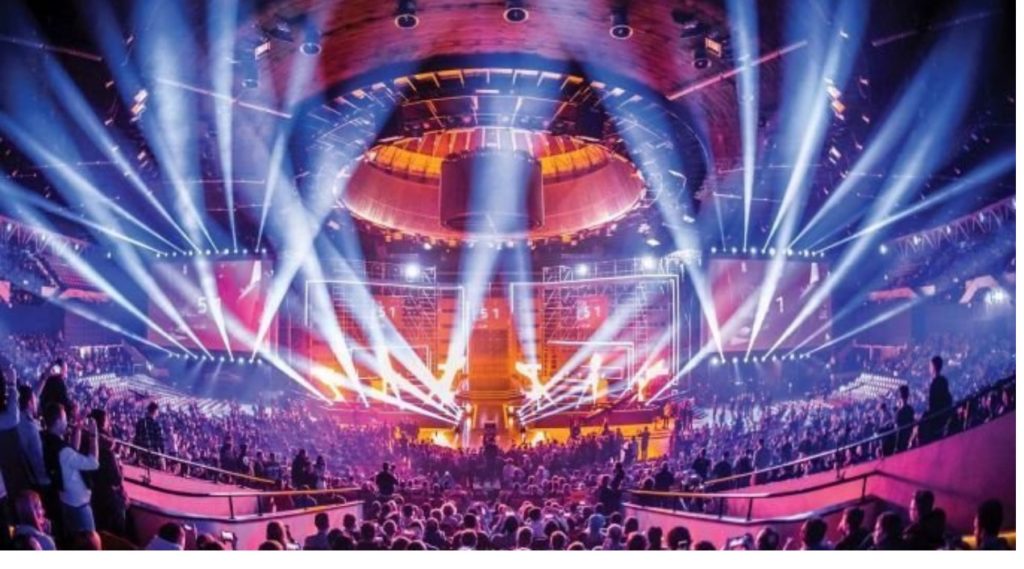 Yesterday I posted IDM in Pictures 3/12. IDM stands for Infrastructure Decision Making. You can think of IDM either as the next stage after strategic asset management or as an intermediary stage between 20th century physical infrastructure and a 21st century that will be increasingly cyber or cyber augmented, but the shape of which we do not yet know. Infrastructure decision making is about asking those questions that will help us make the adjustments we will need to make.
Yesterday I posted IDM in Pictures 3/12. IDM stands for Infrastructure Decision Making. You can think of IDM either as the next stage after strategic asset management or as an intermediary stage between 20th century physical infrastructure and a 21st century that will be increasingly cyber or cyber augmented, but the shape of which we do not yet know. Infrastructure decision making is about asking those questions that will help us make the adjustments we will need to make.
For example, consider the rise of e-sports, a.k.a competitive video gaming. What impact might this have – on physical sports and on our sports infrastructure? Already a $1.5 billion business, it is increasing at 30% p.a. and projected to continue this rate of growth for at least the next five years. How many of our recent stadiums and those now being built have factored in this rate of growth for e-sports – and the possible concommitant impact on physical sports? So far it has mainly affected Asia and North America. However Australia joined the excitement early this year with major tournaments in Melbourne and Sydney. Do our current sports stadiums lend themselves to housing these events? The physical requirements of e-sports in Sydney (pictured) required the design and construction of a purpose-built elevated stage housed in a movie theatre complex. E-sports require high speed internet access and present high intensity light shows, music, dancing along with the video gaming competition. In Asia and North America they can attract crowds of 100,000.
In times of uncertainty we often seek comfort in resorting to what we have always done and are therefore confident that we know how to do. This may give temporary relief from the stress of the unknown but it only pushes the decision making further out whilst making the decisions harder when they come due again, and this is likely to be much sooner than we think. The consequence of doing this in the recent past may be why we are now hearing the term ‘playing catch up’ from our political pundits like Jeff Kennett. I don’t like this term, or the idea it implies. Why catch up when by the time that we do, what we are catching up with will already have passed?
The earlier we pay attention to future issues and start thinking – and talking- about the changes needed – in mindset, technology, principles and practices – the easier our adjustment task will become.
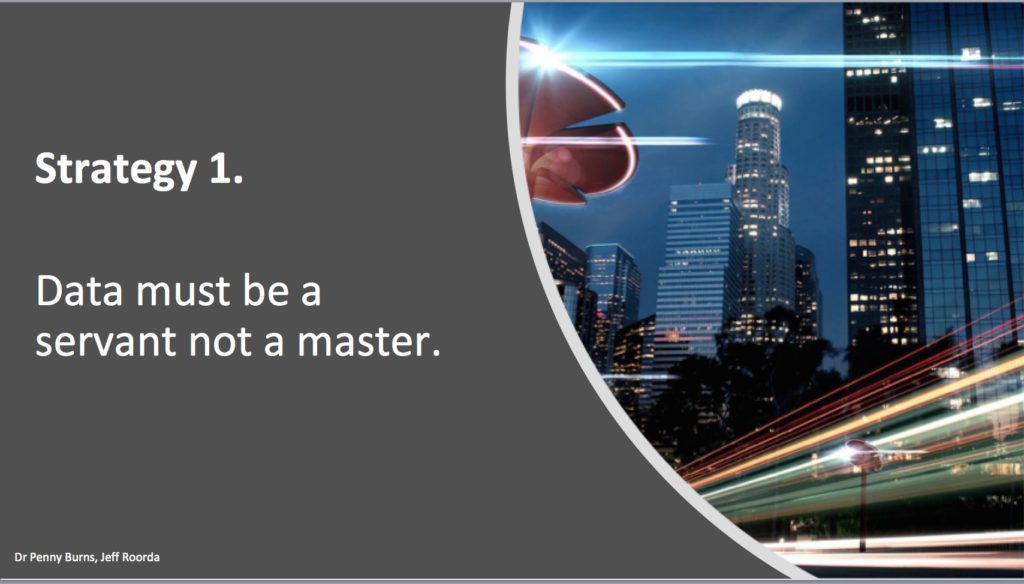
Big data is a route to Abundance, but let us take care, data makes a great servant but a dangerous master.
If we respond to data outputs uncritically we make data our master. Yes, algorithms are becoming ever more complex and difficult to understand – and therein lies the problem. Unless we are able to understand HOW a decision was made, algorithms are just dead dangerous. There are really serious problems of people being denied access to medical or social assistance or being jailed because an algorithm deemed it so. Less serious – but funny! – is the story of two booksellers on Amazon using pricing algorithms that resulted in a 1992 out of print book on the evolution of flies rising to over $28m. A post graduate student interested to buy the book first noticed that where second hand copies were listed at $35, new copies were then over $2,000. When he went back the next day, the price had risen even more, and so it continued. Studying the prices, the student realised that one seller had set his pricing algorithm to be fractionally less than his main competitor in order to attract sales. the other bookseller had set his algorithm to price this book at slightly more than his main competitor. Why? We don’t know but the student suggests (in his blog where he writes it all up) it might have been because the seller didn’t actually have a copy of the book and would have to source it should anyone order. Since the premium of the one seller exceeded the discount of the other, the price kept rising. It took this research student to notice what was happening – not the booksellers, who were, of course, on autopilot. What damage could occur in your work if you are on autopilot?
The ability of big data to deal with increasing complexity is nevertheless a great advantage. Consider how we have moved since the first industrial revolution.
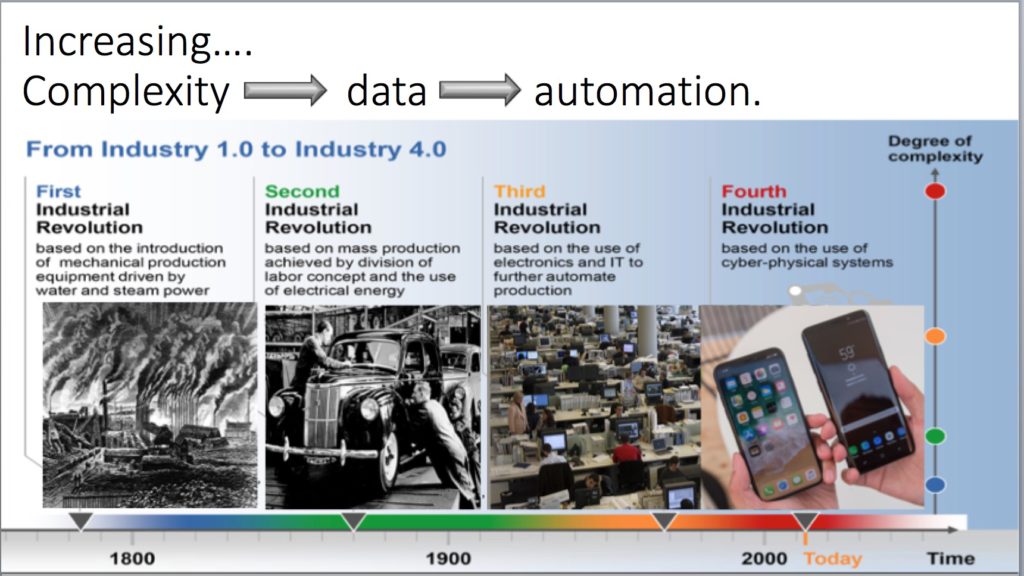
Our data culture is shaped by the first 3 revolutions. This has given rise to two attitudes or mindsets that are no longer acting to our advantage.
- A perception of scarcity and the idea that adversarial competition is good. But we are about to embark on a new world of abundance – as well described in Jeremy Rifkin’s “Zero Marginal Cost Society”. This is requiring businesses to change their business models. We know it as ‘disruption’ but it is more than that, it is opportunity.
- With increasing specialisation we have developed a culture of fragmentation and the idea that knowledge means control. Now that we are able to share knowledge so much more freely, we are able to develop better models, a more fruitful culture.
- This means that we can start to explore replacing these old ideas with a better idea, that humility, gratitude and kindness create abundance and by helping each other we can meet the challenges of an uncertain future. These are not really new ideas. During and just after the second world war, Londoners who had survived the blitz, now faced the problem of recovery. Instinctively they knew that, just as they had survived the war through helping each other, this was also the way that they would meet the uncertainty of the future. But as people became richer, they became more selfish and the initial rate of gain slowed. The way of the future is through collaboration. Harvard studies, as reported by Shawn Achor in “Big Potential”, have clearly demonstrated that teams of collaborating individuals have it all over geniuses. In fact a team of average intelligent people who ‘get on with each other’ well exceed the performance of a team of geniuses.
- This is the real message of ‘big data’ – together we can do more than we can do alone.
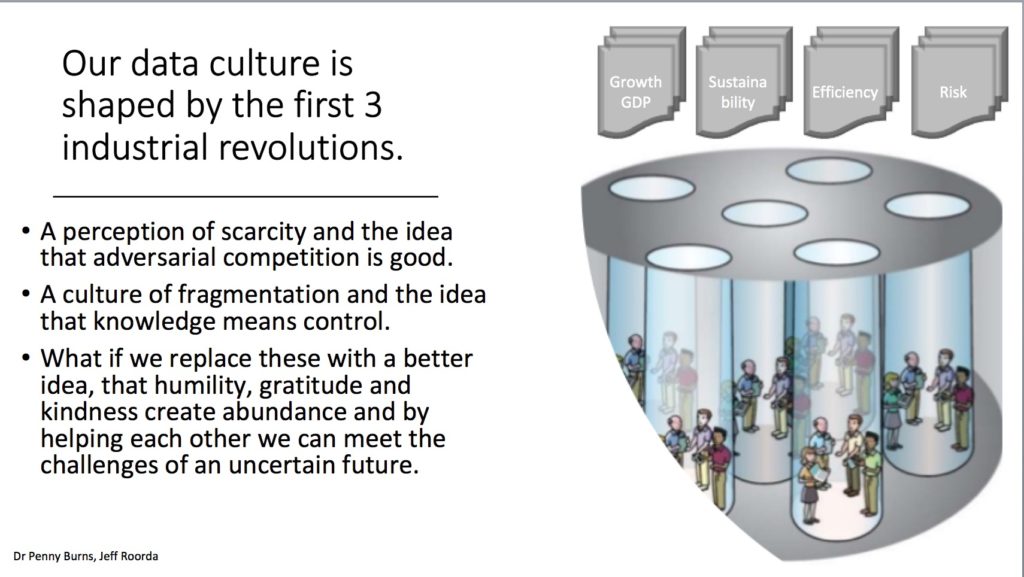
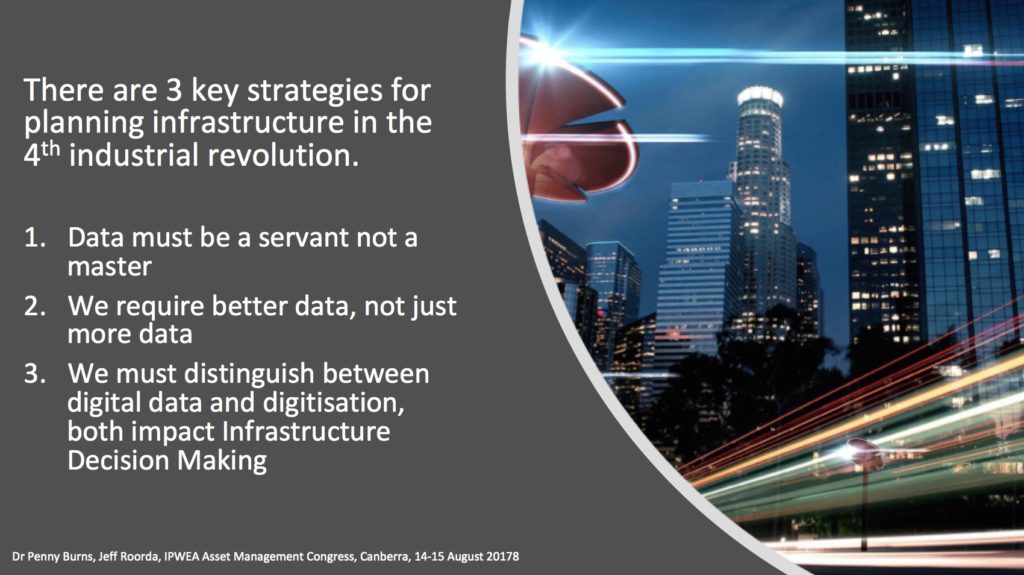
The possibilities of big data are impressive but let us not get carried away.
Not only is there the danger of trusting in the results of data manipulation that we do not understand (cf the many studies showing the dangers of ‘private’ algorithms that are not open to analysis), but there is the greater danger that we put our faith in aiming at ‘data’ outcomes (e.g. KPIs) rather than people outcomes.
So let us put our effort into better measurements of what really matters – better (i.e. more relevant) data. This will inevitably mean using non-dollar measures – and judgement.
Discussion today tends to conflate the benefits of greater use of digital data and digitisation itself. Both are valuable, and both impact infrastructure decision making, but they are not the same.
There is currently much discussion of loss of work opportunities through the use of robots. If our decisions are driven purely by data, then robots can do a great job. But if we want our decisions to include values such as kindness, compassion, and fairness, then we need people.
We appreciate the benefits of big data but do we really want to live in a world without kindness, compassion and fairness?
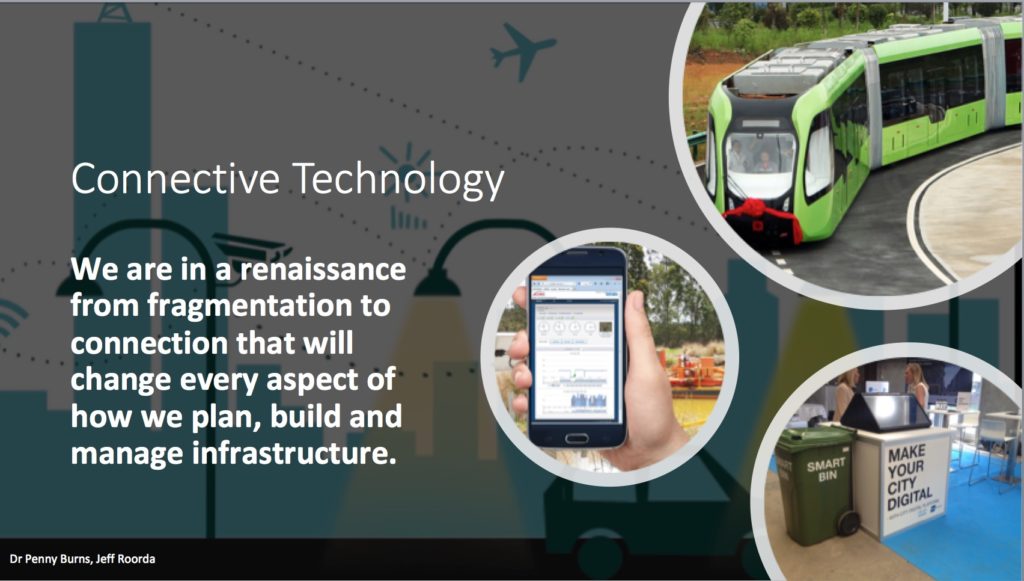
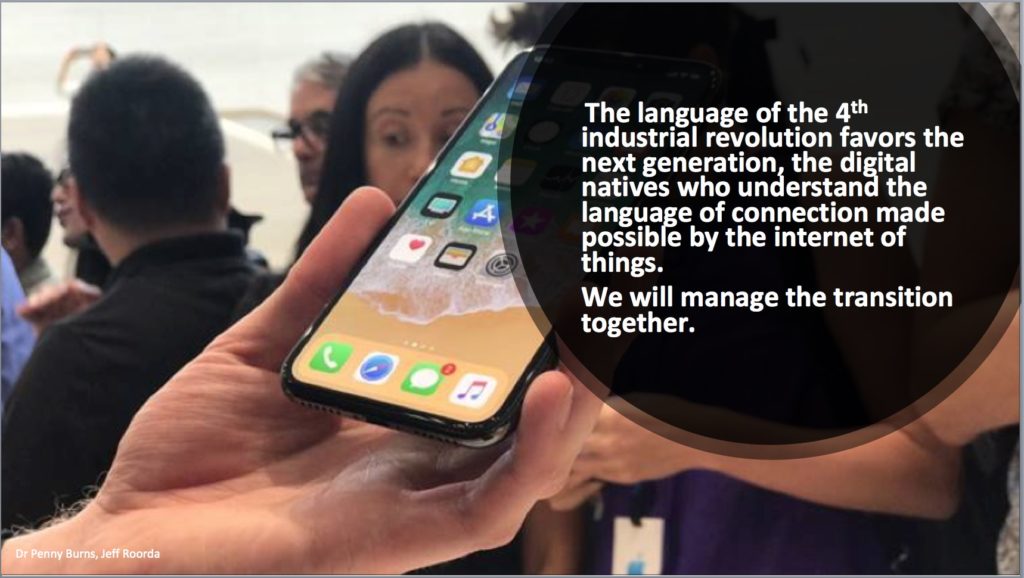
When computerisation first appeared on a large scale, we eagerly adopted it – and used it to carry out the same processes we had used bc (before computerisation). It was many years, in some cases, decades, before we realised that the real value of computerisation was to adopt completely new processes for new outcomes. Today the power of digitisation for connection is still being recognised. We eagerly embrace ‘smart technology’ in our cities – but are slower to recognise that connection can be used to bypass the city. That is we are increasingly able to ‘live, work and play’ in the suburbs, or the country, improving our lifestyle opportunities and reducing environmental costs. But first we have to see it.
INFRASTRUCTURE DECISION MAKING (IDM) IN PICTURES
DON’T MISS ANY OF THIS NEW AND IRREGULAR SERIES, JOIN THE TALKING INFRASTRUCTURE COMMUNITY (it’s free) AND RECEIVE OUR FORTNIGHTLY NEWSLETTER TO KEEP YOU UP TO DATE
 There was a time when I would be in and out of an art gallery in 30 minutes, bored. I looked, but did not engage. Then at a Picasso Exhibition, i found paintings that I really liked, but also many that turned me off completely. After viewing all, I went back and studied these two groups and asked Why? Now galleries are no longer boring. I apply the same process to conference talks. I note all the new ideas, the new linkages that really please me and write them down so that I can think more about them later, and I also note those statements that drive me nuts, and I think about these as well. No prizes for guessing what category the ‘heretical questions’ in the last post fell into.
There was a time when I would be in and out of an art gallery in 30 minutes, bored. I looked, but did not engage. Then at a Picasso Exhibition, i found paintings that I really liked, but also many that turned me off completely. After viewing all, I went back and studied these two groups and asked Why? Now galleries are no longer boring. I apply the same process to conference talks. I note all the new ideas, the new linkages that really please me and write them down so that I can think more about them later, and I also note those statements that drive me nuts, and I think about these as well. No prizes for guessing what category the ‘heretical questions’ in the last post fell into.
But the IPWEA Congress this week, ‘Communities For the Future, Infrastructure for the Next Generation’ was far richer in yielding good new ideas, thoughtful linkages, and new ways of expressing accepted ideas so that they come to life and are taken out of the realm of platitudes. These deserve a far wider coverage, and so, with the support of our podcast partner, the IPWEA, we will be bringing you these ideas, and many others, in our forthcoming podcast series. Watch for it!
Or better still, join the Talking Infrastructure Community (click here) (its free!) and you will be the first to know when we launch.
A closing note: At an after lunch session in Parliament House many years ago, the talk was so boring I found it a hard job to keep my eyes open. Yet my colleague was riveted! He was listening intently and taking notes. At the end I sighed and said ‘That was a really boring talk’. ‘Absolutely’, he agreed. Surprised I responded ‘But you were riveted, paying great attention, taking notes, how come?’
His reply? ‘To make so boring a presentation, there must be many things he was doing wrong. I just wanted to figure out what they all were!’ Be engaged!


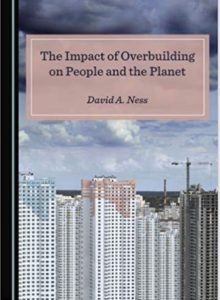

Recent Comments